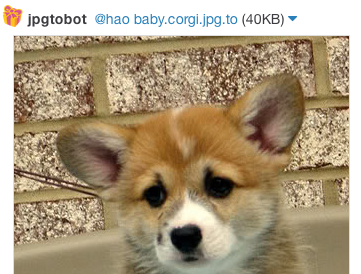| Copyright | (c) The Linklaterteers |
|---|---|
| License | BSD-style |
| Maintainer | hi@haolian.org |
| Stability | experimental |
| Portability | GHC |
| Safe Haskell | None |
| Language | Haskell2010 |
Network.Linklater
Description
Here's a /jpgto bot! If you run this program and then tell Slack
about your server (incoming hook and custom slash command) and then
type /jpgto baby corgi in one of your channels, you'll get the
image from http://baby.corgi.jpg.to.
https://github.com/hlian/linklater/blob/master/examples/JointPhotographicExpertsGroupTonga.hs
One /jpgto baby corgi, et voila.

Documentation
slash :: (Maybe Command -> Application) -> Application Source
slashSimple :: (Maybe Command -> IO Text) -> Application Source
Constructors
| GroupChannel Text | A public or private group. |
| IMChannel Text | A private conversation with your best friend -- or lover ;). |
A username: no at-signs, just text!
Here's how you talk: you make one of these and pass it to say.
Before the day is done, Linklater will convert this to a JSON blob
using Aeson.
- Simple messages are parsed by Slack with parse=full (i.e. as if you had typed it into the input box).
- Complex messages are parsed according to Slack formatting. See
Format.
Constructors
| SimpleMessage Icon Text Channel Text | |
| FormattedMessage Icon Text Channel [Format] |
Like a curiosity about the world, you'll need one of these to
say something.
Constructors
| Config | |
Fields
| |
Incoming HTTP requests to the slash function get parsed into one of these babies.
Constructors
| Command | |
Fields
| |
The icon next to the messages you say. (Images unsupported
right now, sorry.)
A little DSL for Slack formatting.
Constructors
| FormatAt User | "<@user|user>" |
| FormatUser User Text | "<@user|user did this and that>" |
| FormatLink Text Text | "<http://example.com|user did this and that>" |
| FormatString Text | "user did this & that" |